A dance for summer, Sagi Mai, the ancient Japanese dance of the white heron, brings protection and blessings, just as these beautiful birds appear around the banks of the Kamo River in Kyoto. There are a number of white heron dances in Japan, some discussed below. The root source, Sagi Mai, is associated with the Gion Festival of the Yasaka Shrine in Kyoto, a major Shinto center and part of the Shinto-Buddhist complex at the core of Japanese culture.
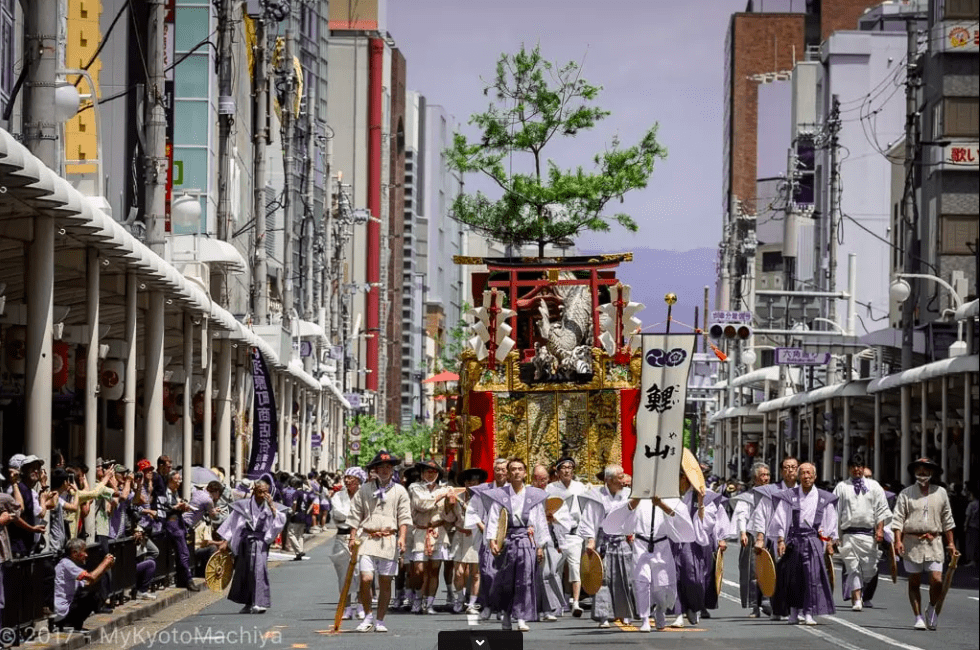
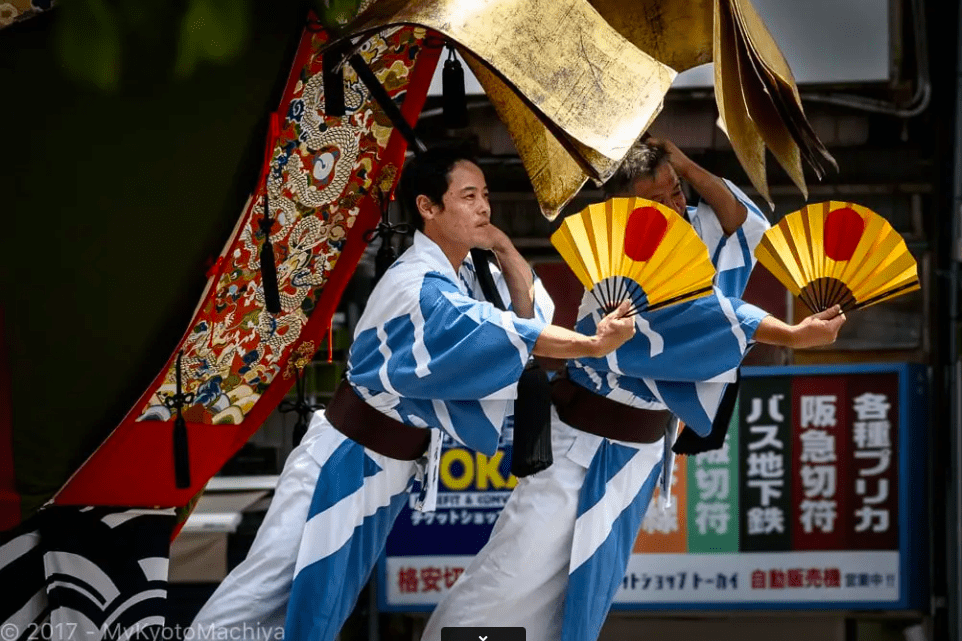
Although the Gion Festival began in the ninth century, Sagi Mai was connected to a more ancient exorcistic dance of scattering evil, both of which were performed together, or in sequence, and the shifting presence of the heron characterized the dances. In the village of Tsuwano, the people have maintained the Gion Sagi Mai in unbroken transmission since 1542 until today. The dance is performed at 11 locations in Kyoto, moving about the riverbed as the herons do, returning in the evening to the main ritual at the Yasaka Shrine. Thanks to the preservation success at Tsuwano, the dance was reintroduced to the Gion Festival and it has been performed there again continuously since 1955. Other villages and towns offer Sagi dances as processions with children or women.
The original dance is for two herons: one open-beaked and representing masculine yang energy, and one with beak closed, who represents the feminine yin energy. The costume wings are made from Japanese cypress, with the head of the heron in paulownia. The full costume weighs as much as 15 kilograms.
As an ancient tradition, the Gion Festival has always been observed not only as a protection from fire but also as a celebration of the mercantile success of the city. Elaborate wooden carriages symbolizing prosperity are offered to the gods of nature. The Sagi Mai was created as a ritual patronage, a lavish gift to the festival and city, and one that has lasted for more than a thousand years. Herons are also believed to protect from illness and disease and are symbols of fresh water and purity.

The white heron has an illustrious presence in Japanese performing arts. The Buddhist Noh theater repertory includes a number of Shinto-themed plays. Here the white heron symbolizes nature itself as evergreen. The emperor calls to the heron, who turns around mid-flight and returns to pay homage, thereby implying that all of nature submits to the deity that is the sovereign potentate.
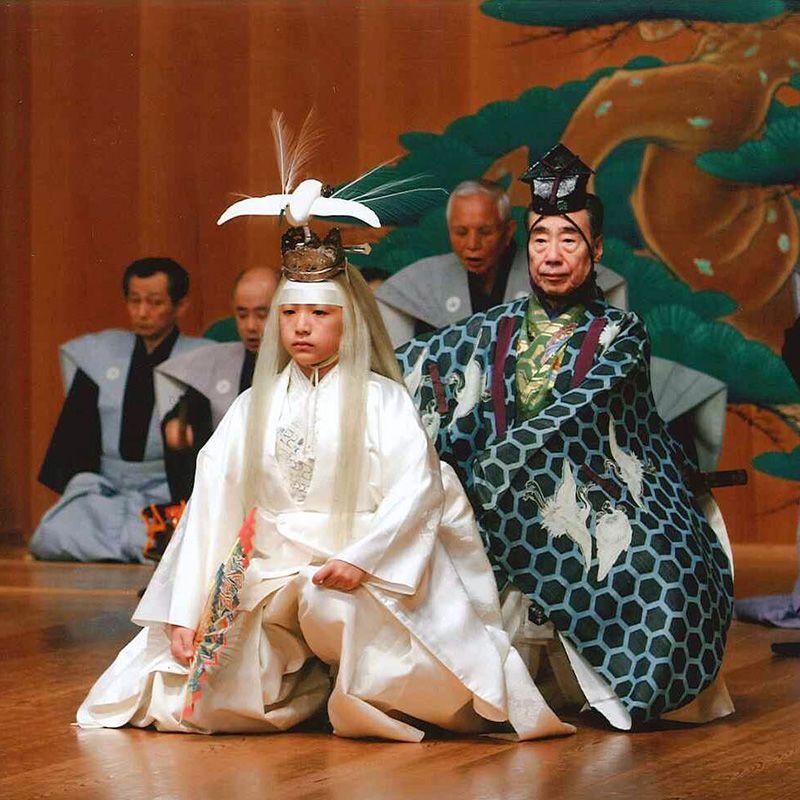
There is a little-known story that a major in the United States Army was assigned after the Second World War to review cultural performances of various kinds, and to ban anything that upheld the deification of the emperor. The major saw this play, in a cold Noh theater during heavy rain, and was struck by the reverence of people who gathered to see the performance, transported by the poetry and exquisite art of the spirit before them. He concluded that this was not so much about extolling the emperor as it was a part of the living memory and cultural fabric of Japanese society. The major ensured the survival of Noh by not outlawing it, although he had no background in the performing arts. How unusual a Noh play must have seemed to him . . .
The Kanze Noh family are direct descendants of the 13th century founder of Noh, Zeami. The “ZE” of Kanze is for Zeami. The “KAN” is for his father Kan’ami. Today, Kanze Kiyokazu is the 26th-generation head of the Kanze school of Noh. It is our good fortune that there exists a 2013 video, produced by Keizo Okubo, of this great sensei teaching his own 13-year-old son Saburota how to perform Sagi. Sagi in Noh is only performed by a boy or a man over 60 years old.
At its heart, Sagi is about purity of spirit, natural wholeness, the poetry of the wild, which Kanze Saburota performs so beautifully. Even in a video segment, the purity he expresses is palpable, part of the purity is in his blood and lineage connecting him to Zeami.
In Kabuki, the legendary onnagata (female impersonator) Bando Tamasaburo made Sagi Musume,the Heron Maiden, a signature role of this classic of Japanese aesthetics. The spirit of a heron inhabits a young woman, who poetically transforms from a young innocent into a seductress, and then into a women betrayed, all in the falling snow of memory and loss. This pure dance Kabuki piece, the Heron Maiden, is considered a virtuoso dance, executed with perfection only once in many generations.
Purity, protection, beauty, memory, the white heron dances of Japan offer a cool breeze in the heat of summer. Shinto and Buddhism coexist easily today, as they have throughout much of Japanese history; the Japanese people happily visiting Shinto shrines and Buddhist temples as needs and culture dictate. The Shinto kami, or gods of the natural world, are a beautiful example of nature, even animals, teaching wisdom.
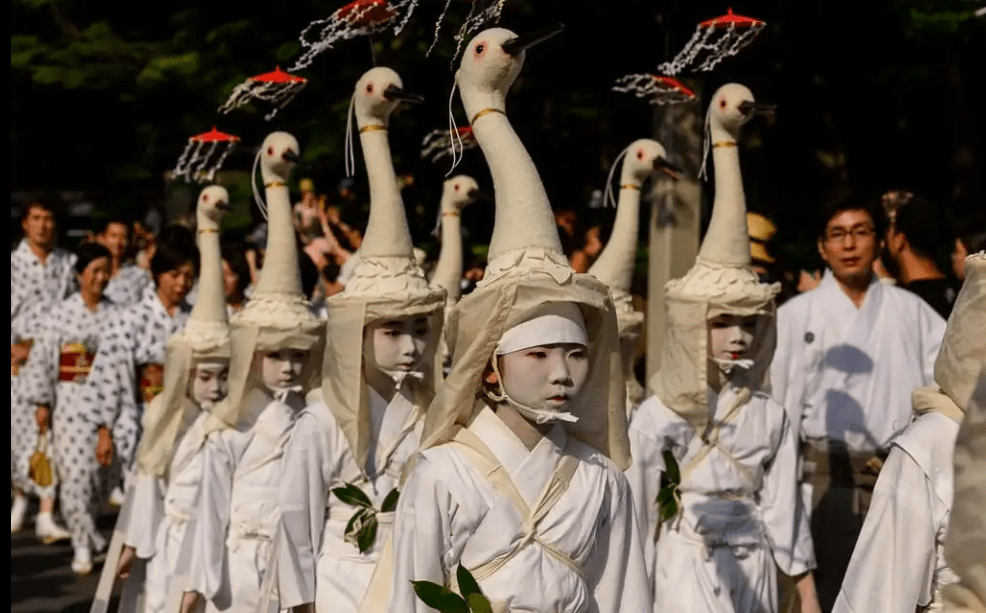
See more
Related features from BDG
Okina, an Endless Blessing from Long Ago
Noh Now
Rarified, Recondite, and Abstruse: Zeami’s Nine Stages
Hagoromo
Beauty and Sadness: Reflections on a Japanese Noh Play


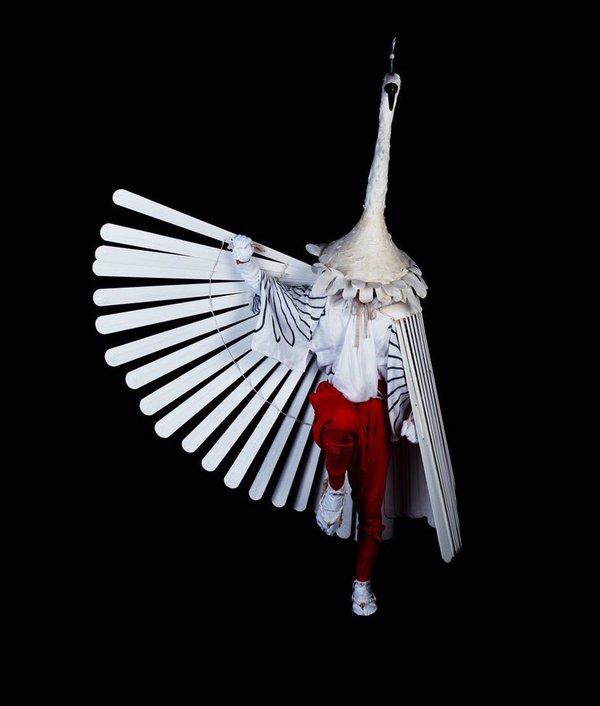
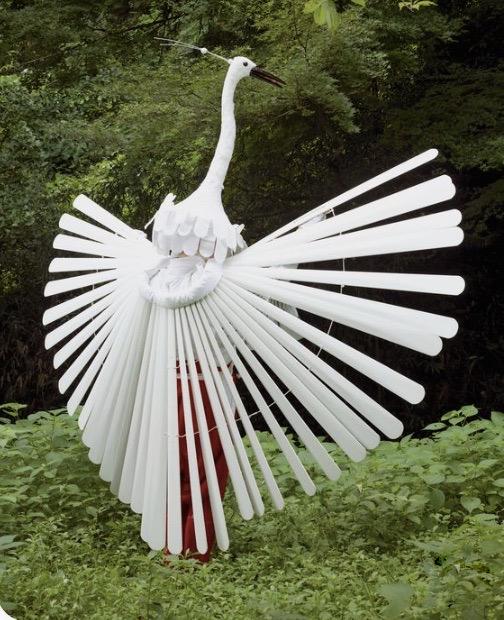
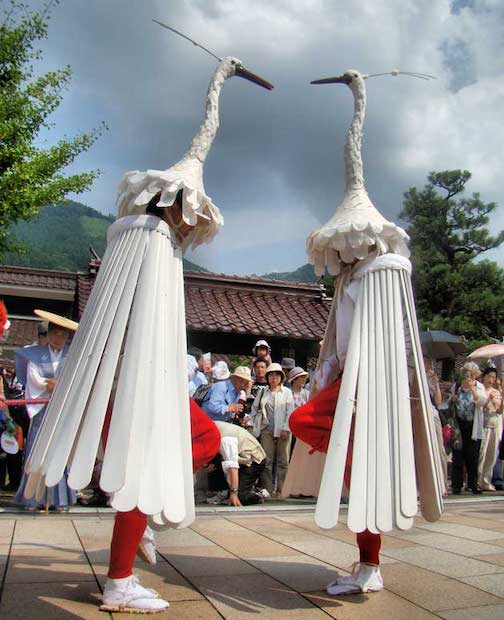
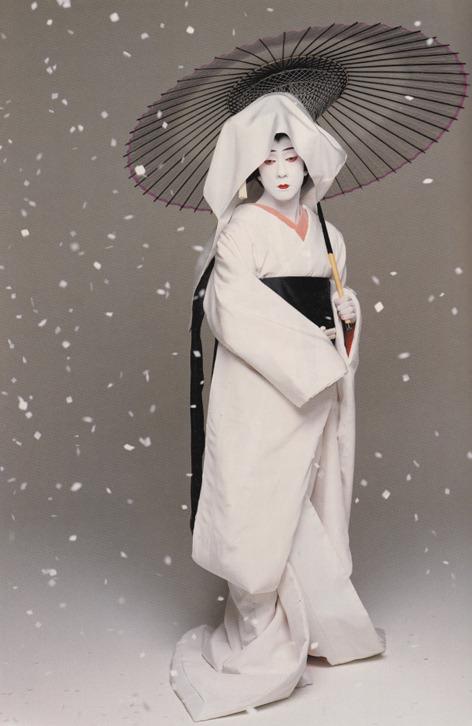
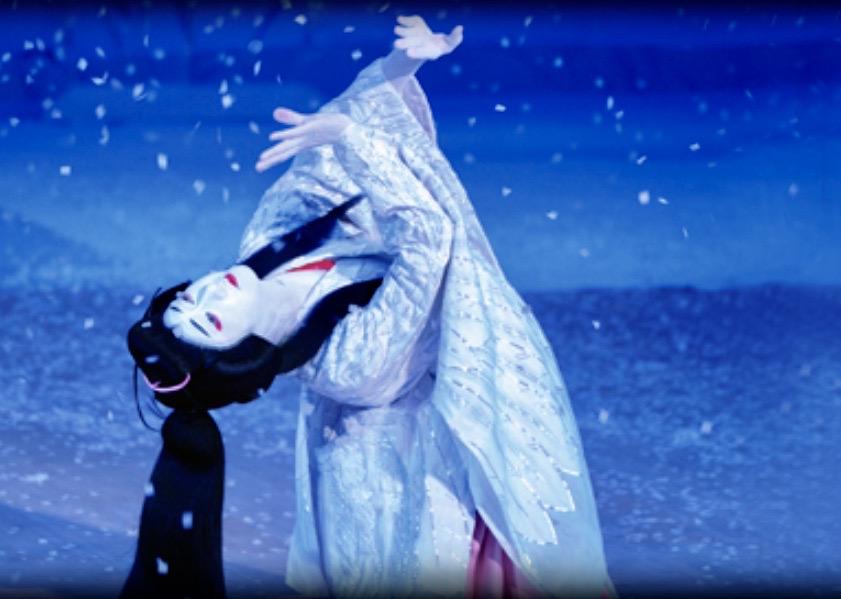





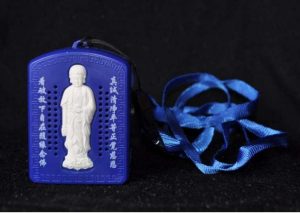





Good to go to a deeper, slower inner space with the White Heron